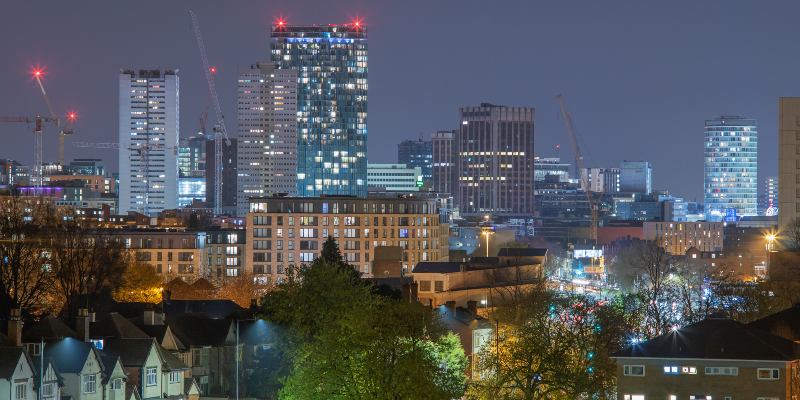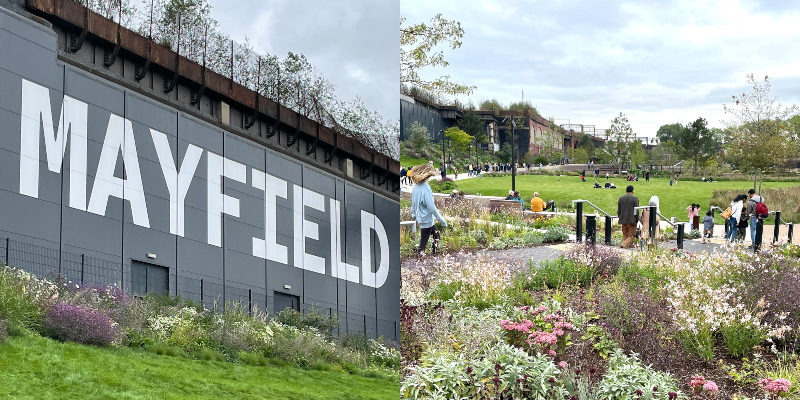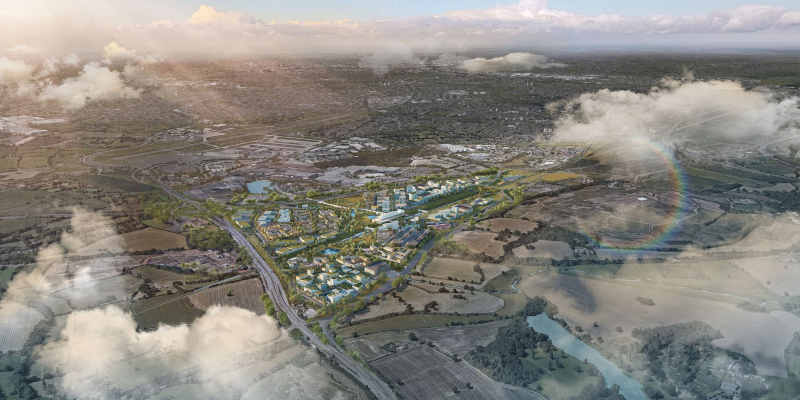Comment
Investment Zones: a new opportunity for integrated regeneration
The Chancellor’s mini-budget introduced a new tool for urban regeneration – the Investment Zone. Spatially designated zones for investment and economic development are, however, not new in the UK.
Successive governments have sought to use zonal approaches to funnel investment to places in need of regeneration and those which can spur economic growth.
Many comparisons have already been made with the Enterprise Zone experiments of the 1980s and later designations. Some comparisons report unfavourably on the actual impacts of such zones in creating jobs, compared to the original estimates.
The time-limited range of tax incentives on offer in the new generation of Investment Zones are, on their own, not surprising or entirely new either. They comprise:
- Business rates – 100% relief from business rates on newly occupied business premises, and certain existing businesses where they expand in English Investment Zone tax sites. Councils hosting Investment Zones will receive 100% of the business rates growth in designated sites above an agreed baseline for 25 years.
- Enhanced capital allowance – 100% first year allowance for companies’ qualifying expenditure on plant and machinery assets for use in tax sites.
- Enhanced structures and buildings allowance – accelerated relief to allow businesses to reduce their taxable profits by 20% of the cost of qualifying non-residential investment per year, relieving 100% of their cost of investment over 5 years.
- Employer National Insurance contributions relief – zero-rate Employer NICs on salaries of any new employee working in the tax site for at least 60% of their time, on earnings up to £50,270 per year, with Employer NICs being charged at the usual rate above this level.
- Stamp Duty Land Tax – a full SDLT relief for land and buildings bought for use or development for commercial purposes, and for purchases of land or buildings for residential developers.
Simplified or “liberalised” planning is also on offer to speed the process of securing investment in jobs and homes in Investment Zones.
Familiar but new
Just because the zonal approach and range of incentives on offer are familiar does not mean that Investment Zones will work in the way that previous initiatives did.
For a start, central Government is not imposing Investment Zones on places whereas previous Enterprise Zones were centrally designated. Places have the opportunity to nominate themselves and this is a genuinely different approach.
We believe that with the benefit of learning from previous attempts at incentivising investment and by taking an integrative, place literate approach to regeneration that much better outcomes can be achieved.
An integrative and place literate approach
Places and their economies are continuously evolving and are shaped by a wide range of local stakeholders as well as companies who have a choice of where to invest. These days most places already have plans and development frameworks in place to guide regeneration investment.
Past attempts at conferring a special status or a zone have, we would suggest, been inward looking exercises. Centrally designated, the people and stakeholders involved in shaping a place and its economy have not been instrumental in the process of determining the spatial extent of the area conferred a special status.
The implication of this has been a poor integration of such zones with urban regeneration initiatives that are currently underway or planned. Legacy issues also arise when the funding or incentives end.
The new generation of Investment Zones offers a genuine opportunity to locally integrate regeneration initiatives in places and to add value to them. The integrative power of Investment Zones could be the one thing that really makes a positive difference.
Imagine the opportunity to boost regeneration through integrating some of the following within Investment Zone status and incentives:
- Planned public transport and mobility schemes (including High Speed links and stations);
- Innovation Districts being brought forward by private and public sector partners and Higher Education Institutions;
- Regeneration areas where the public sector holds strategically scaled property and land assets (civic complexes, shopping centres etc.);
- Large scale new communities delivering homes and jobs;
- Areas designated for development in Strategic Regeneration Frameworks, masterplans and development frameworks; and
- Designated Freeports
The integrative potential of these ingredients with Investment Zone incentives is huge if it is grasped.
The potential to also align and focus public sector funding support to Investment Zones is a further area of integrative potential that should be explored.
Is this likely to happen?
The guidance, issued by the Government on Saturday 24 September, provides plenty of latitude for places to determine a clear narrative for how an Investment Zone in their locality will spur additional investment and bring together initiatives.
The Government’s guidance states that:
“Sites may be aligned with existing local growth strategies and transport plans. Sites that already have a masterplan, development order or outline permission could be considered as a potential Investment Zone, as could sites where planning consents are not yet in place. Development sites where planning simplifications apply may be co-located with, or separate to, tax sites, depending on what makes most sense for the local economy.”
The criteria included within the guidance document also refers to the importance of demonstrating alignment with other planned major investments, such as HS2 stations, suggesting that the Government has a desire through Investment Zones to support and add value to locally determined regeneration solutions.
Those who are successful will be able to demonstrate how the conferring of Investment Zone status will help places to reach their potential and deliver additional economic and housing benefits that are significant for the UK. The prize for places across the UK is the potential to accelerate delivery of major regeneration project through the use of Investment Zones.
Case studies
Manchester
Manchester has long been a pioneer of locally designed urban regeneration solutions and we have no doubt that it will shape an Investment Zone that is appropriate for its circumstances and potential.
The potential opportunity to integrate different regeneration ingredients around the Piccadilly area of the city centre, for example, with a new Investment Zone is vast and includes:
- An HS2 station
- An Innovation District (ID Manchester)
- A brand new urban park (Mayfield Park) and planned mixed-use development
Arden Cross
Arden Cross is a once in a generation opportunity to capitalise and capture the benefits of major new transport investment at the HS2 Solihull Interchange.
The 140 ha Interchange site is being promoted to deliver 6 million sq ft of commercial development, alongside 3,000 new homes and create 27,000 new jobs on land around the new HS2 Interchange.
The Interchange site is highlighted within the Growth Plan as an example of somewhere which may have the potential to accelerate growth and deliver housing the way envisaged by the Investment Zones programme.
The announcement has already been welcomed by the Leader of Solihull Council, Cllr Ian Courts, the Director of Arden Cross Ltd., Ben Gray, and the Mayor of the West Midlands, Andy Street, suggesting Arden Cross will be high on the list of potential Investment Zones.

Birmingham
Birmingham is no stranger to urban regeneration initiatives. It’s 113 ha city centre Enterprise Zone covers 39 sites and has helped to accelerate the transformation of the city centre since it was established in 2011.
Its purpose was to deliver economic growth and unlock development potential to deliver the vision of the Big City Plan (2011), focussing on key sites and infrastructure projects such as Paradise, the Midland Metro Extension, and public realm improvements.
With Birmingham City Council now working on it’s ‘Our Future City Plan’, a new Investment Zone for the city could focus on connecting the city core with more peripheral inner-city areas, promoting investment which meets the growth needs of more communities, and spreads the benefits of regeneration across a wider area.
For a discussion about how Turley can help to develop a place–economy narrative and make the case for Investment Zone status, please speak to one of our Urban Regeneration team.
28 September 2022





